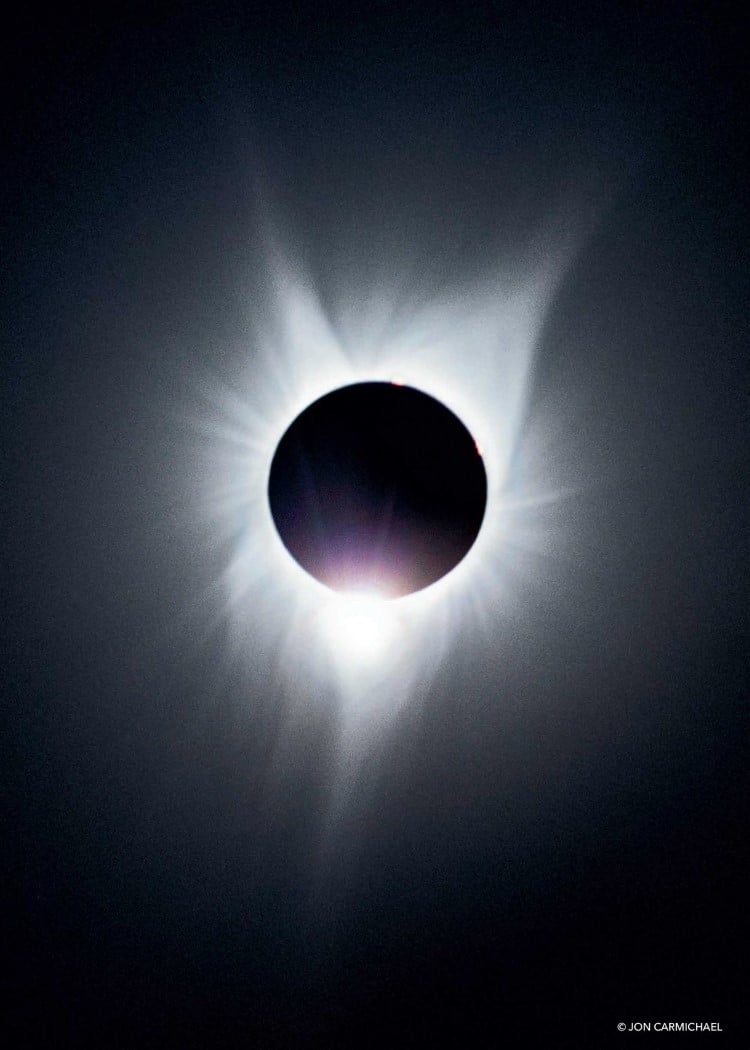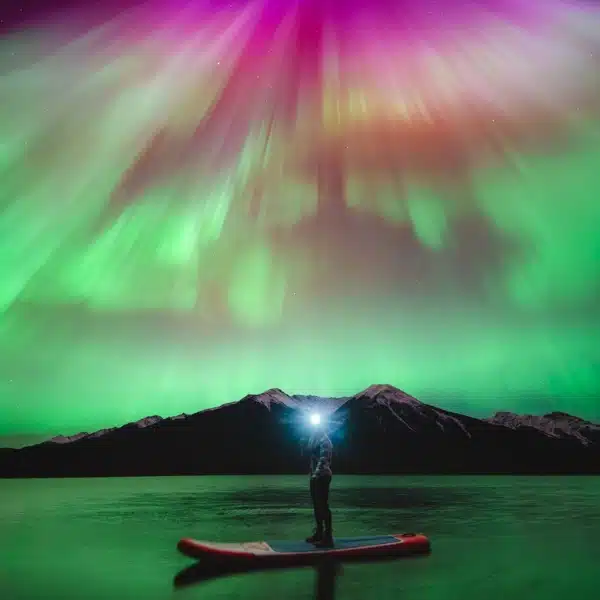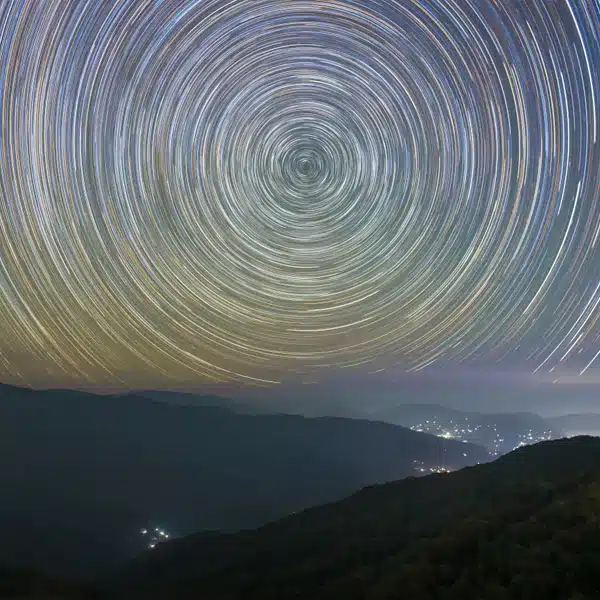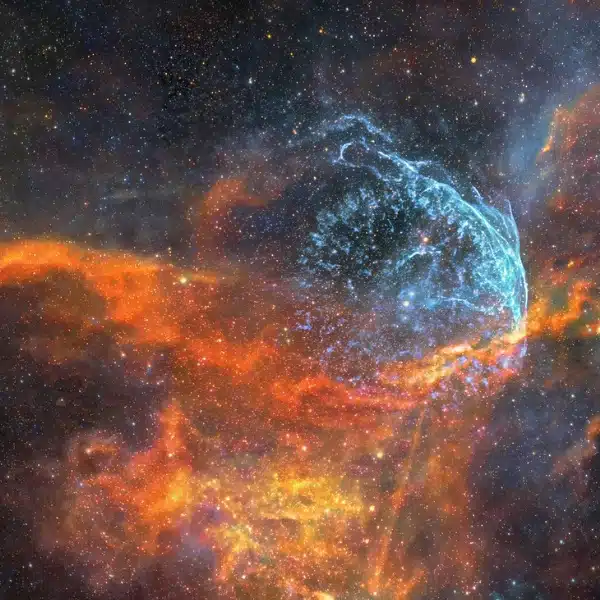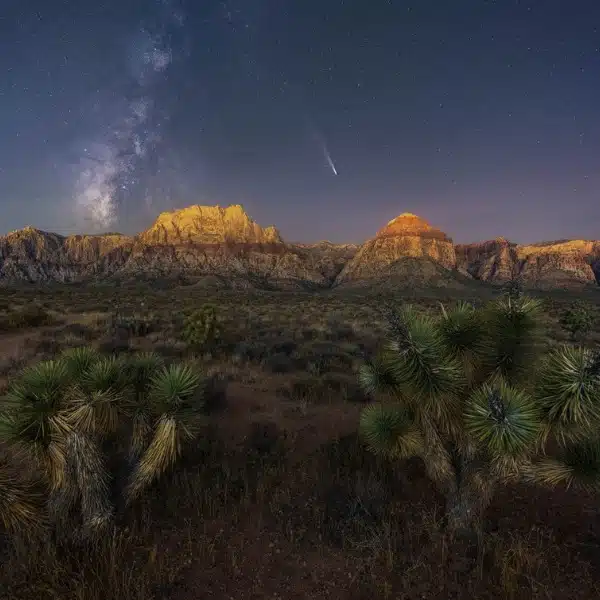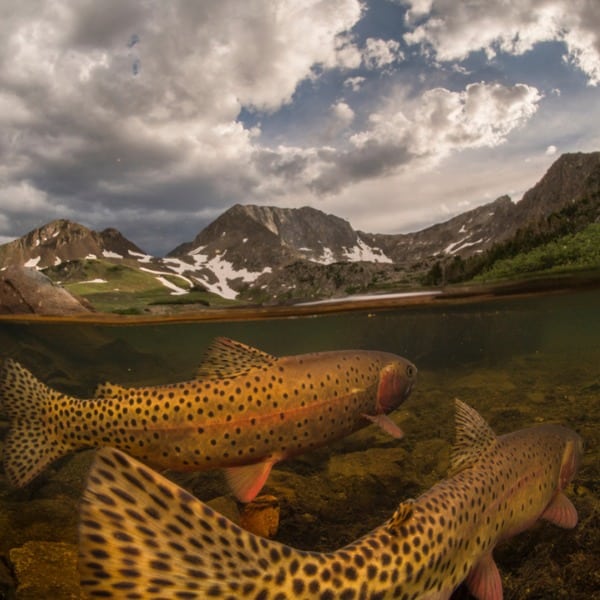It's been seven years since anyone living in the United States had the opportunity to experience a total solar eclipse. But now, in less than two months, the big event is set to occur. On April 8, the Great North American Solar Eclipse will be viewable from most of the United States, as well as Canada and Mexico.
Viewing a total solar eclipse is a once-in-a-lifetime event, but it also comes with safety considerations. It's critical that people do not look directly at the Sun, so wearing solar eclipse glasses is a must. Luckily, the non-profit Prevent Blindness has created ISO certified solar eclipse glasses that will allow anyone to watch the big event without worry.
As the Great North American Solar Eclipse will most certainly be a highly photographed event, the organization also worked with acclaimed photographer Jon Carmichael to put together a video about how to safely photograph it. Carmichael took an epic image of the 2017 total solar eclipse from inside an airplane. This image has been called “history's most amazing photo,” and is available as a print on Carmichael's website.
We got the chance to chat with Carmichael in the lead-up to the big event and get his advice on how to photograph the total solar eclipse safely. Read on for My Modern Met's exclusive interview and stay tuned for more news from the Great North American Solar Eclipse, as after the big day, there are sure to be some spectacular images to view.
What are must-have pieces of equipment for photographing the eclipse? Is it possible to do it on a budget?
This really depends on what you hope to achieve in capturing the eclipse and your budget. However, you can get great shots with any budget! If you’re more of a professional or hobbyist with a DSLR or mirrorless camera, you may want a telephoto lens (200-400mm) to get closer detail of the eclipse or a wider lens if you want to capture the scenery around you.
Also, be sure to have a sturdy tripod, a shutter remote to prevent camera shake, solar filters to protect your eyes, and a camera sensor. It's entirely possible to photograph the eclipse on a budget, especially with how far phone cameras have come. You can also use solar eclipse glasses to cover your lens instead of specialized filters, although quality may vary.
If anyone is interested in more tips and tricks, I partnered and shot a fun video with a great non-profit, Prevent Blindness, that gives much more in-depth recommendations.
Are there any online tools or apps that would be helpful for people to know about?
More advanced apps such as Stellarium and PhotoPills can be invaluable for planning your eclipse shoot. They provide precise information on the eclipse's path, timing, and position in the sky, allowing you to scout locations and anticipate composition opportunities. If you’re shooting with your phone, a good app is Solar Snap (iOS and Android), which works well with a solar filter over your phone lens.
What type of advance planning should people do?
Advance planning is crucial for a successful eclipse shoot. First, you want to think about what kind of photograph you’re hoping to achieve. Research the eclipse's path and duration, scout potential shooting locations (i.e., do you want to be on a mountaintop? Or by the ocean?), and be sure to consider factors like weather conditions and accessibility.
You should also have a backup plan if the weather is cloudy or rainy in your planned area. Practice photographing the Sun beforehand to familiarize yourself with your equipment and settings. Remember, totality only lasts a few minutes if you’re lucky, and you don’t want to be fiddling and trying to figure out your settings and miss one of the most beautiful moments nature has to offer us.
What should people expect on the day of?
On the day of the eclipse, expect a surge of excitement and anticipation. This likely means a lot of traffic anywhere inside the Moon’s shadow, especially if it’s a well-known location. Be sure to arrive at your chosen location early to set up your gear and secure a prime shooting spot.
What makes photographing the eclipse so special?
Photographing the eclipse is special because it's such a beautiful yet fleeting moment. In my opinion, it’s the most beautiful moment you’ll ever see. It’s also incredibly rare—this will be the last total solar eclipse in the U.S. until 2045. Solar eclipses captivate and unite people around the world and offer a unique opportunity to witness the alignment of the Sun, Moon, and Earth in perfect harmony.
But with all that said, be sure not to just focus on getting the best photographs. Make sure you take time to actually pause and enjoy the moment away from your camera. I recommend trying to get the camera set up to shoot automatically as best as you can so that you can be present and take in those short few minutes with the community around you.
What's the biggest safety precaution people should take?
The most critical safety precaution when photographing the eclipse is to never look directly at the Sun without proper eye protection, and especially not through the viewfinder of your camera. Be sure to use solar eclipse glasses at all times before and after totality, but beware, not all the eclipse glasses out there are certified! I highly recommend getting your glasses from Prevent Blindness because you can be confident those will keep your eyes safe. Also be sure to protect your camera sensor, just like you would your eyes, with a solar filter. If you have to resort to ND filters, be sure it’s at least 16 stops darker.
Jon Carmichael: Website | Facebook | Instagram
All images by Jon Carmichael. My Modern Met granted permission to feature photos by Prevent Blindness.
Related Articles:
NASA Sun Mission Photographs Fiery Solar Eclipse From Space
Perfectly Timed Photo Captures a Person “Holding” a Total Solar Eclipse
This Image of the Total Eclipse Is Being Called “History’s Most Amazing Photo”
NASA Releases Incredible Photos of This Weekend’s “Ring of Fire” Solar Eclipse



